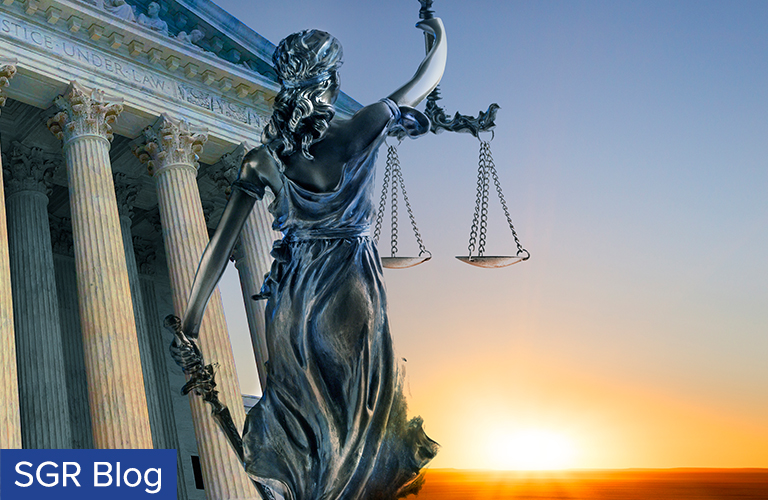
April 23, 2020, Washington, D.C. The Supreme Court today held that a plaintiff need not prove that a defendant acted “willfully” in order to recover profits as an equitable remedy for trademark infringement under Section 35(a) of the Federal Trademark Act of 1946, as amended (the “Lanham Act”), 15 U.S.C. § 1117(a). Romag Fasteners, Inc. v. Fossil, Inc., No. 18-1233, — S.Ct. —-, 2020 WL 1942012 (April 23, 2020).
The plaintiff, a designer of fasteners used in handbags, brought an action against a handbag manufacturer alleging infringement of its “ROMAG” trademark. A jury found the manufacturer liable for patent and trademark infringement. After a two-day bench trial to address equitable defenses and adjustment of the amount of profits awarded by the jury, the U.S. District Court for the District of Connecticut concluded that the designer could not recover the manufacturer’s profits for trademark infringement absent a finding of “willful” infringement by the manufacturer, even though the manufacturer had acted “in callous disregard” of the plaintiff’s rights. The U.S. Court of Appeals for the Federal Circuit affirmed.
The Supreme Court disagreed, holding that although a finding of willfulness is a condition to profits in an action for trademark dilution under Lanham Act Section 1125(c), 15 U.S.C. § 1125(c), there is no such requirement for infringement under Section 35(a) of the Lanham Act, 15 U.S.C. § 1125(a).
“Without question, a defendant’s state of mind may have a bearing on what relief a plaintiff should receive,” the Court stated. “An innocent trademark violator often stands in very different shoes than an intentional one.” The Court noted, however, that some circuits had gone even further and held that a plaintiff can recover a defendant’s profits only after showing the defendant willfully infringed its trademark. The Court held that this categorical rule could not be reconciled with the statute’s plain language.
In addition to distinguishing Section 43(c) of the Lanham Act, 15 U.S.C. § 1125(c), the Supreme Court engaged in a “wider look” at the Lanham Act and found “even more reason for pause.” The Court noted that the Lanham Act “speaks often and expressly about mental states.” For example, Section 35(b) of the Lanham Act, 15 U.S.C. § 1117(b), awards treble profits or damages and awards attorney’s fees when a defendant engages in certain acts intentionally and with specified knowledge, and Section 1117(c) of the Act, 15 U.S.C. § 1117(c), increases the cap on statutory damages from $200,000 to $2,000,000 for certain willful violations.
Similarly, Section 36 of the Lanham Act, 15 U.S.C. § 1118, permits courts to order infringing goods to be destroyed if a plaintiff proves any violation of § 35(a), 15 U.S.C. § 1125(a), or a willful violation of Section 35(c), 15 U.S.C. § 1125(c). Additionally, the Court stated, Section 32 of the Act, 15 U.S.C. § 1114, makes certain innocent infringers subject only to injunctions; and elsewhere the Lanham Act specifies mens rea standards needed to establish liability before even getting to the question of remedies. See, e.g., Lanham Act Sections 43(d)(1)(A)(i), (B)(i) (prohibiting conduct only if undertaken with “bad faith intent” and listing factors relevant to ascertaining bad faith intent).
For additional discussion of today’s ruling, click here.

